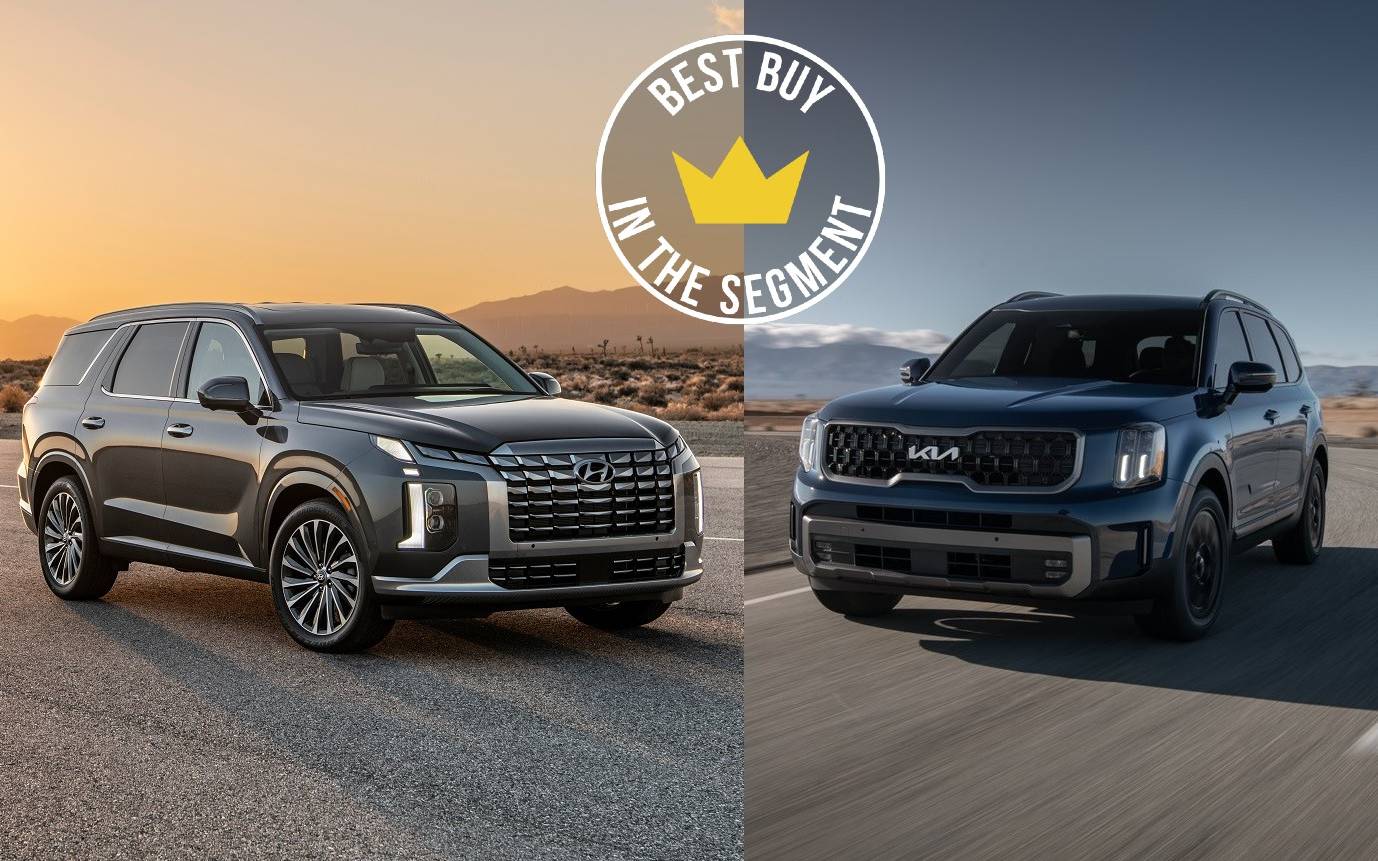The Best Three-Row Midsize SUVs in 2025
Looking at all the three-row midsize SUVs available on the market, the team at The Car Guide has identified the three models that represent the best buys for 2025.
While obviously not as popular as compact SUVs, these vehicles are a great fit for many Canadian families, whether driving the kids and their friends to soccer practice or packing a lot of gear for a road trip.
Read also
1. Hyundai Palisade/Kia Telluride
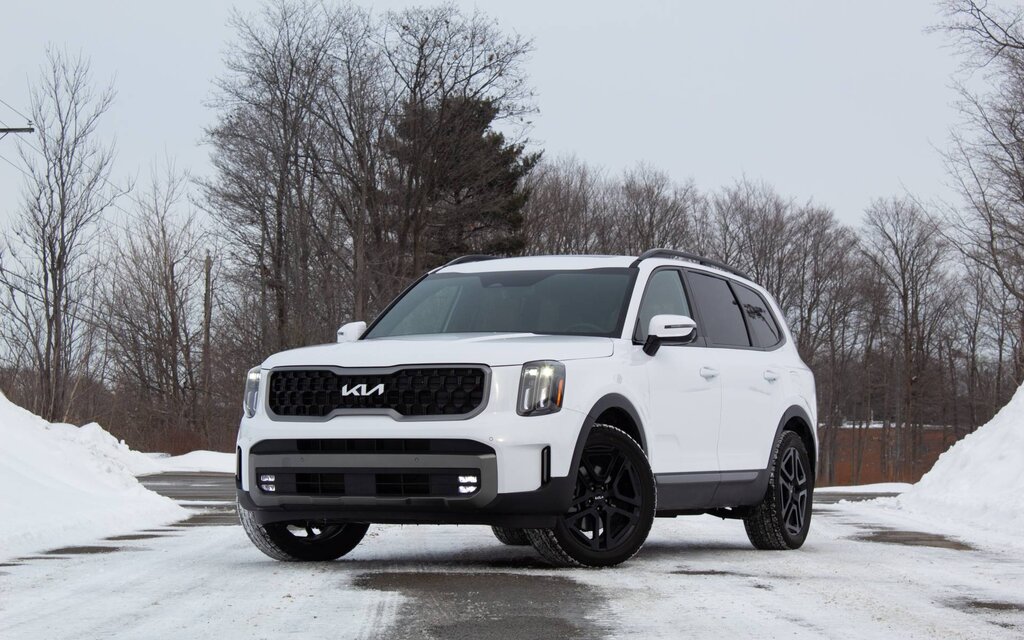
The Hyundai Palisade and Kia Telluride stand at the top of our rankings once again. In fact, we’ve put them there every single year since they hit the market as 2020 models.
From a technical standpoint, the two Korean SUVs share the majority of their components. What really sets them apart is their distinctive design. The Kia Telluride has a boxier, more rugged exterior, while the Palisade looks classier and more conventional. It's up to you to decide which one you prefer.
Under the hood, both vehicles use the same 3.8-litre V6 mated to an 8-speed automatic transmission. Power and torque are identical at 291 hp and 262 lb-ft.
There are no notable changes in store for 2025, although the Hyundai Palisade adds a new top-of-the-line model called Ultimate Calligraphy Night.
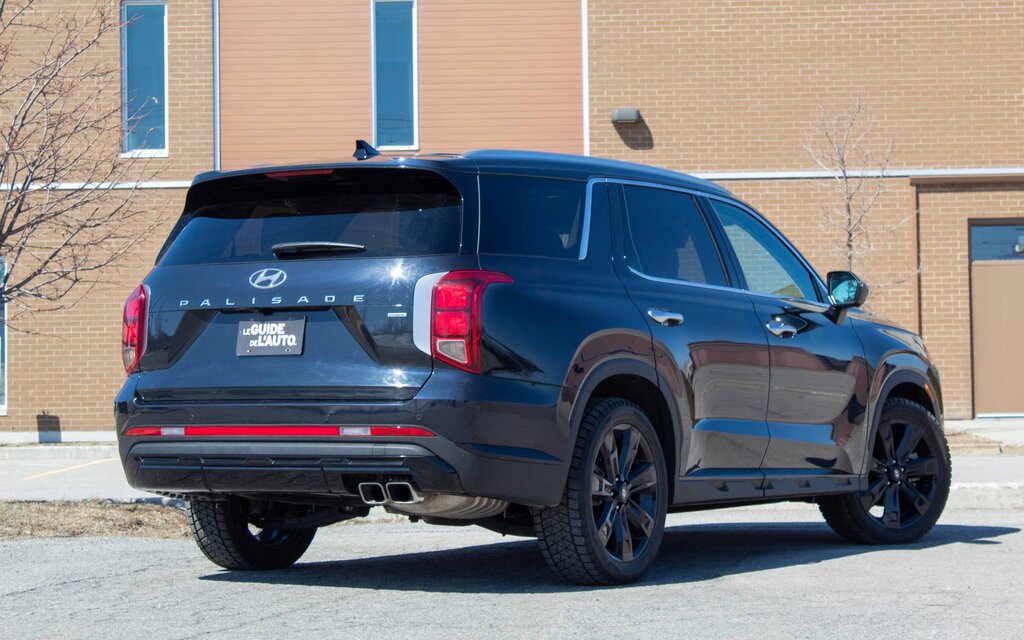
Sur la route, les deux véhicules se sont montrés convaincants. Leur tenue de route est efficace et nous avons également apprécié le confort de la suspension. Dans l’habitacle, la qualité de finition, l’espace disponible ainsi que la très bonne insonorisation en font des utilitaires très bien adaptés à un usage familial.
On the road, these two midsize SUVs prove pleasant to drive, with confident enough handling and a comfort-tuned suspension. Just so you know, we found the Telluride to be slightly more dynamic during our test drives. Inside, families will love the quiet, spacious and beautifully finished cabin no matter which brand they select.
Our main complaint has to do with fuel economy, which isn’t great, especially when driving around town. The competitors below all offer electrified powertrain options. That being said, all signs point to the Palisade getting one when the next generation arrives for the 2026 model year.
2. Toyota Highlander/Grand Highlander
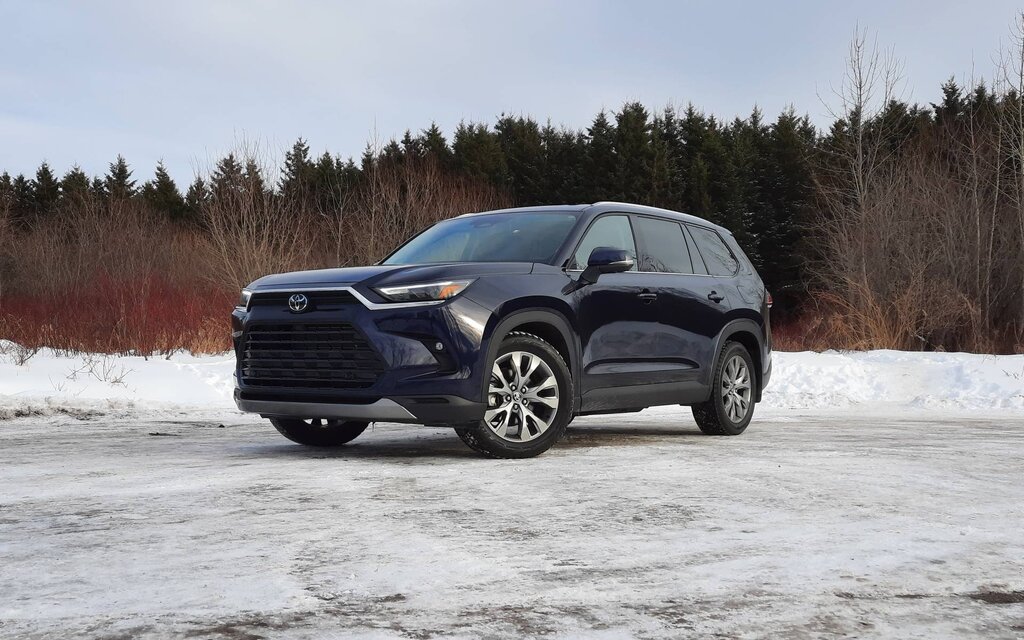
The Toyota Highlander and Grand Highlander return as our runners-up in the segment.
The Highlander's standard engine is a turbocharged 2.4-litre four-cylinder, but the more compelling option is the available hybrid system achieving 7 L/100 km or better in ideal conditions. That’s fantastic fuel economy for an SUV of this size. On the other hand, sacrifices have to be made when it comes to towing, with maximum capacity dropping from 5,000 lbs to 3,500 lbs. Remember that if you need to pull a boat or trailer.
The biggest knock against the Highlander is definitely limited third-row space. That's why Toyota came up with the larger and roomier Grand Highlander, which can actually accommodate adults in the rear seats. Not only that, but cargo room is more generous, too. When all the seats are folded down, the difference between the two SUVs is close to 400 litres.
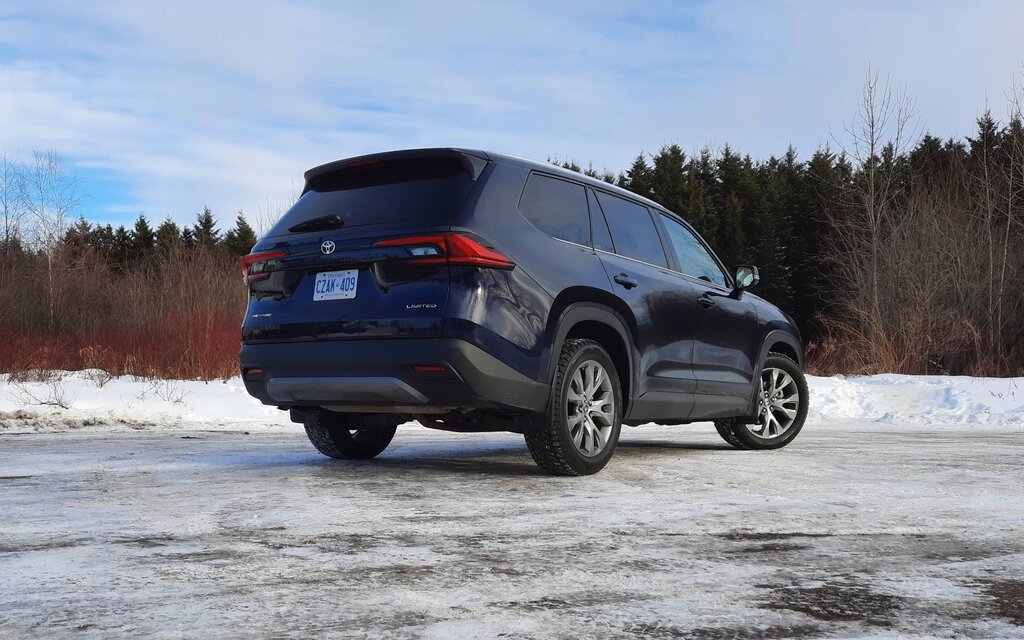
Another thing the Grand Highlander has going for it is an available Hybrid Max powertrain—exclusively in top-line Platinum Max trim, which is a bit of a shame—that delivers 362 combined horsepower instead of 245 horsepower with the non-Max hybrid system.
Overall, the reliable and well-built Highlander and Grand Highlander are safe picks in the three-row midsize segment. Large families will be pleased with them, even more so when resale value is factored into the equation. Sadly, car thieves love them just as much, which is reflected by higher insurance premiums
3. Mazda CX-70/CX-90

Last year, the Mazda CX-90 made a name for itself, placing third in our rankings despite being all-new to market. For 2025, it's joined by the similarly sized and designed CX-70, which offers only two rows of seats instead of three.
In both cases, Mazda deserves praise for the level of build quality and material selection, making you feel like you’re sitting in a genuine luxury SUV. On the flip side, the CX-90 and CX-70 aren’t as generous as most competitors in the segment in terms of passenger and cargo space.
In typical Mazda fashion, the two deliver sharp handling and are arguably the most fun to drive out there. The inline six-cylinder engine deserves credit as it proves a flexible yet strong performer. What’s more, combined fuel consumption is less than 10 L/100 km. We just wish that engineers would do something to fix that jerky 8-speed automatic transmission.
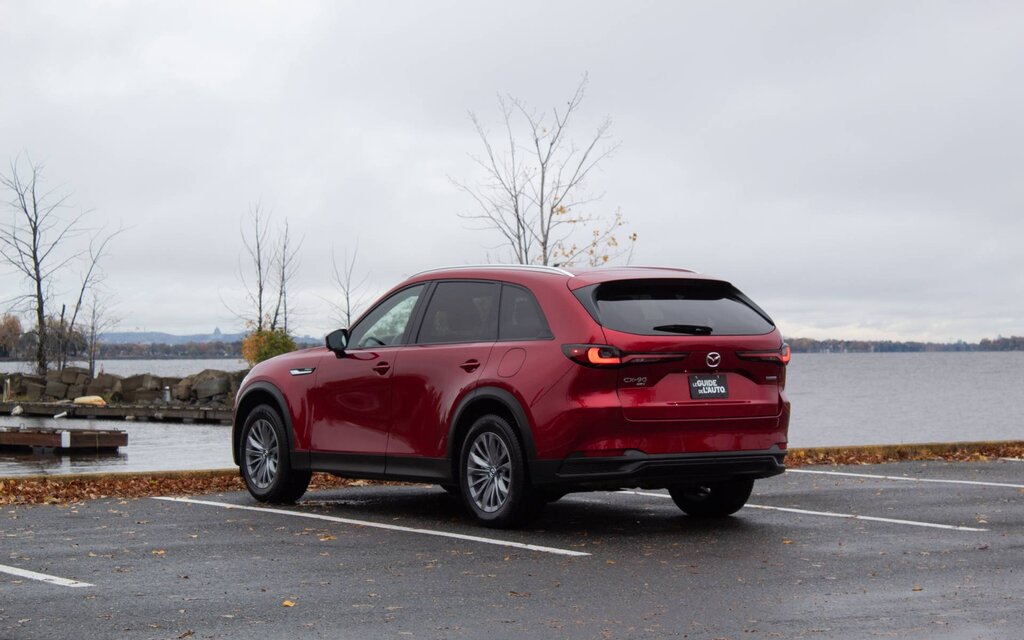
Alternatively, the CX-90 and CX-70 can be specified with a plug-in hybrid system pairing a 2.5-litre four-cylinder engine with an electric motor. Zero-emission range is 42 km—not much but still enough to do plenty of commutes without burning any fuel, if you make a habit of plugging the vehicle to charge the battery. Otherwise, this powertrain loses much of its appeal—fuel economy in hybrid operation is actually a tad worse than that of the turbocharged six-cylinder. Additionally, maximum towing capacity is lower on PHEV models (3,500 lbs instead of 5,000 lbs).
For more information and ratings, don’t miss our Best Buys section.

